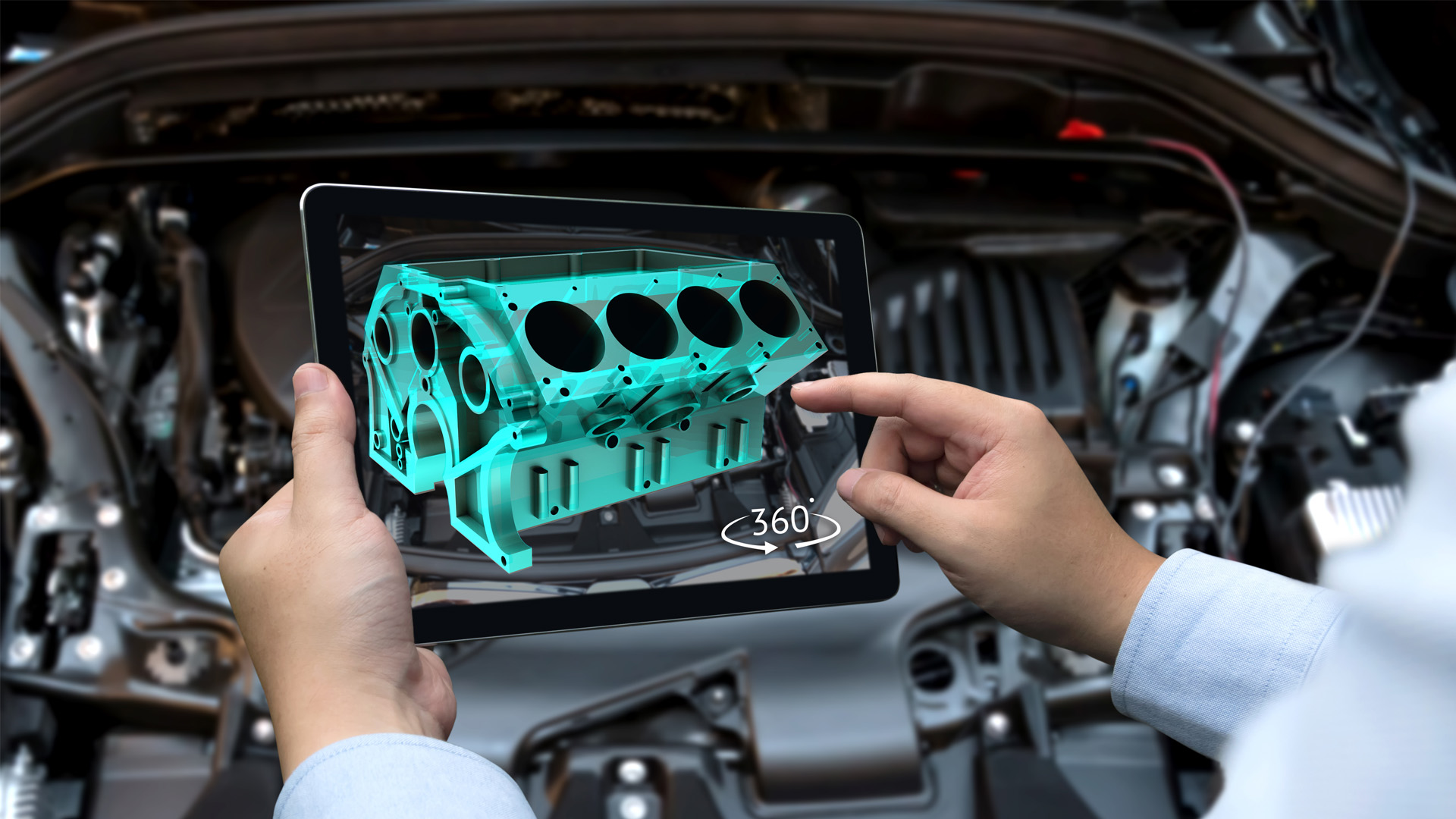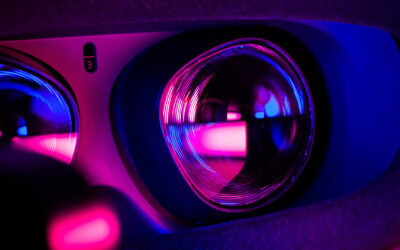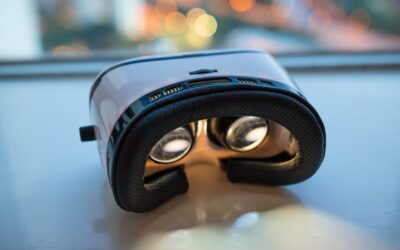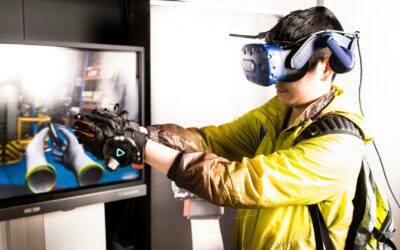Augmented Reality (AR) can be used to create virtual prototypes of a product before investing time, money, or labor into making an actual physical prototype. This cost-saving technique not only saves companies time and money but also enables them to produce more creative designs than they might have imagined before prototyping with AR.
To most people, augmented reality is the same as virtual reality (VR), but they’re very different concepts. While it is often associated with gaming and immersive virtual experiences, augmented reality enhances the real world.
You can define augmented reality as merging the real world with computers and technology, which is always present. Unlike virtual reality, which is not present in everyday life, you can experience augmented reality alongside normal activities.
Augmented reality has many uses in all areas of life – from shopping to building and construction to medicine – but it has two main areas: industrial and military.
In manufacturing, augmented reality has a range of purposes, including helping workers complete tasks, testing products before shipment, and improving production processes.
Here are five ways that augmented reality is changing industrial manufacturing:
Increasing Efficiency Through Visualization
When workers need to access a manual on their computer, they have to take their eyes off the task at hand, move away from what they’re working on, and find somewhere to sit down.
With augmented reality, you can visualize tasks in the field and information accessed by simply looking at what you’re working on. But how does augmented technology play a role in this?
With augmented reality, a worker can see how they should complete an assembly process by displaying overlaid information in the real world. It is achieved with computer-aided manufacturing (CAM) or augmented reality software that takes 3D data from a computer and projects it onto an object in real-time.
Visualizing tasks in the workplace makes the instructions easier to follow, reducing errors and misunderstandings and faster production.
For example, assembly instructions can be highlighted directly onto a product, helping produce large products like airplanes and increasing the quality of work. The worker is not distracted from working on the actual task and can keep their eyes on what they’re doing.
They also don’t have to worry about getting back to their desk to follow instructions or look at a computer screen trying to keep up with what they’re doing.
Improving Product Quality Through Visual Inspection of Products
One of the oldest industries in the world is manual production, and historically this has involved many safety hazards and failures. The lack of visualization technology means workers have to rely on their senses.
For example, you may have to walk around a product to check it visually, and the result is product recalls or even explosions if mistakes occur. However, workers can instantaneously see what is wrong with products before shipping them out with augmented reality.
Using augmented reality to inspect a product before it is shipped means that companies can save on costs and improve their reputation as a manufacturer.
Workers will be able to see any dents or scratches on the product, for example, to identify any problems and fix them.
Augmented reality allows companies to monitor the quality of their products throughout the whole production process.
If you identify an issue, workers can address it immediately rather than wait until a production line’s end or ship a product with mistakes. With this level of visualization, workers are far more likely to spot problems earlier, which saves companies money and improves the overall quality of their products.
Streamlining Logistics with Augmented Reality
Logistics is one of the essential parts of manufacturing, and the delivery of goods affects millions of people in many different industries. Still, for those in manufacturing, it is necessary due to the vast amount of materials that are shipped around.
Logistics play a prominent role in how productive factories are and how well they can drive their business forward. Logistics can be very disorganized, especially with workers having to rely on paperwork, phone calls, or other forms of communication to manage the delivery and transportation process.
Augmented reality can completely change logistics by visualizing information in real-time using augmented reality glasses or a heads-up display (HUD).
It means that workers don’t have to look at paperwork or their phone but can see exactly where they want concerning other factories and what they need to do. They can also see how and when materials will arrive at their facility.
With this level of visualization, workers will be able to identify problems like delays and bottlenecks before they happen. It also means that logistics can be more efficient, ensuring that products arrive on time, reducing costs, and improving customer satisfaction.
Production cycles will be shorter, as workers won’t have to wait for materials.
When you consider the future, augmented reality is very promising. In the end, workers may not even need passengers to deliver materials. If you use augmented reality glasses, they could automatically detect the location of materials and interact with robots to unload deliveries.
Faster Assembly and Replacement of Parts with Augmented Reality
While assembly lines are a significant step forward in producing goods, they can also be a time-consuming and costly process. Assembling a product manually can take a long time and require multiple workers to complete the process. It leaves workers responsible for assembling products and purchasing materials with very little time to do their job. It means that workers are busy trying to keep up with the job and spend little time creating goods.
However, with augmented reality technology, parts can be assembled or replaced in the blink of an eye. Assembling components is a tedious process for both worker and the manufacturer – it takes time to find out where each piece of the part goes and then add it to a mesh model before completing the final product. It can take a long time and may require workers to do the same part several times.
With a 3D model, however, this is unnecessary. Assembly is simplified, and updates are instant, meaning that workers can maintain their focus on the task at hand rather than spending time finding out where various parts go. In addition, you can do updates immediately after assembly to maintain products’ consistency and reliability from one job to another. Augmented reality allows companies to keep up an efficient workforce that can produce more products within less time.
Greater Visibility of Assembly Work and Workplace Health Risks
One of the most common workplace hazards workers face is repetitive strain injuries (RSI). These are injuries caused by repetitive motions and can often lead to severe physical impairment. Companies can be liable for RSI injuries if they fail to provide worker protection through training, safe assembly, and equipment. Workplace security is a severe issue for many manufacturing companies as it can mean a drop in productivity or even expensive lawsuits.
Augmented reality can help to reduce these dangers. Visualization allows companies to identify and repair RSI problems before they occur. After assembly, workers can immediately see whether something is wrong with a product or their work.
In addition, companies can use augmented reality to maintain better control over workplace health and safety. If your company uses augmented reality glasses, workers can see what other factories do when they inspect.
This kind of transparent production enables companies to help prevent RSI injuries by giving workers accurate and real-time information about their locations at all times. By monitoring these settings on an ongoing basis, workplaces will be safer and improve the safety of their employees. Doing this could save companies time and money by preventing accidents from happening in the first place.
How Augmented Reality Is Changing The Manufacturing Industry
Machine vision is transforming current manufacturing processes and could have a wide-ranging impact on the future of manufacturing. Software applications such as Facebook’s Oculus Rift already have the potential to change the way we work and play.
As this technology gets more familiar with our world, it will continue to develop and improve in ways we can only imagine. Technology is being created that allows us to see, hear, touch and even taste what is happening around us at all times.
When augmented reality first hit the scene, its most common use was in video games. Companies such as Microsoft and Google have used the technology to create an immersive gaming environment that players believe is real. Augmented reality is quickly creeping into other industries that utilize machine vision in their daily operations.
Machine vision has already helped improve worker productivity and efficiency in manufacturing, but it could also lead to many new developments. Machine vision can change how we produce goods in the future – reducing costs while also making production more accurate and efficient.
While this is still very much in the future, it is already a guarantee that as more people start using augmented reality, it will change our world in ways we can only imagine.
Augmented Reality for Manufacturing: What is The next step
Augmented reality is a huge industry and one that is growing in popularity. Today, more and more companies are turning to machine vision to gain an edge over their competitors by improving the efficiency of their lines.
Augmented reality is quickly becoming a big part of manufacturing and could be a game-changer for the industry in the future. In addition, as augmented reality becomes better and more advanced, it could be a valuable tool for many different sectors, including medicine, military, and education.
Augmented reality is making its way into everyday business, and it is already evident that this technology can transform manufacturing experiences. If a company wants to be ahead of the competition and stay on, they have no choice but to incorporate this emerging technological advancement.
With Augmented Reality, companies will harness more of their manufacturing lines’ value. With this improvement in efficiency, companies will significantly improve their bottom line while also boosting employee satisfaction and health while working.
Manufacturing is a vast industry that has been around for a long time, and it has also seen many changes throughout the years. It is a multibillion-dollar industry that could be seeing huge improvements within the next decade. Augmented reality will continue to play an essential role in the future of manufacturing, and it will only get more advanced as time goes on.
How to Get your Manufacturing Business a Competitive Advantage in 2022
Developing a Digital Manufacturing Strategy
The manufacturing industry is changing and has already started to embrace digital technology. Companies will see the most value from integrating augmented reality technologies into their workflow. Just as businesses need a digital strategy, manufacturing companies must do the same. Machine vision and augmented reality make it possible to bring new tools and processes into the manufacturing environment.
Learning New Technologies
Today’s workforce is not only highly skilled, but they are also tech-savvy. It means that people are constantly creating new working methods with the tools they already have on hand. Manufacturing companies need to keep up with the trends and develop new ways of working with existing technology.
Augmenting Operations
In addition to using augmented reality for various projects, manufacturers will also benefit from using machine vision technology to monitor the production line. Machines can do simple tasks more effectively than humans, and machines can track the progress of a product across an assembly line in real-time – speeding up processes and lowering costs.
Improving Safety
Safety is always one of the top priorities for manufacturing facilities. Machine vision can help reduce accidents and keep factories running smoothly, and it ensures that everything is running according to plan and keeps the factory floor safe for employees.
Improving Efficiency
Machine vision software can also improve efficiency by alerting workers when something needs their attention or when a product is not complete yet. It allows employees to concentrate on improving their work, which ultimately saves time and money for manufacturers – improving the bottom line of any company.
Summing Up
Augmented reality is making its way into ordinary business environments. New applications and devices are in development every day, and more companies are turning to machine vision to streamline operations.
Being an excellent manufacturing company means preparing for future changes, which involves learning about new technologies, developing a digital strategy, and implementing new technologies that will be useful to your company’s current operations. Augmented reality technologies will continue to grow and develop, and they will become more helpful to businesses of all types. Companies that embrace these technologies will stay ahead of the competition and be more profitable in the future.
Automation Alley is a World Economic Forum Advanced Manufacturing Hub (AMHUB) for North America and a nonprofit Industry 4.0 knowledge center with a global outlook and a regional focus. We facilitate public-private partnerships by connecting industry, education and government to fuel Michigan's economy.




